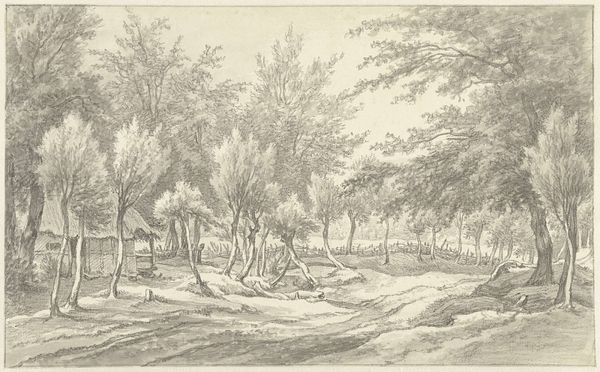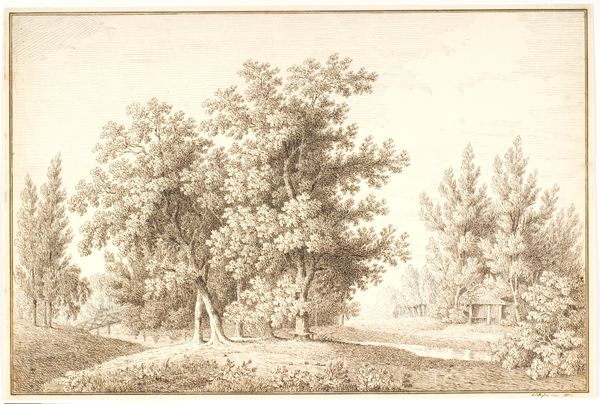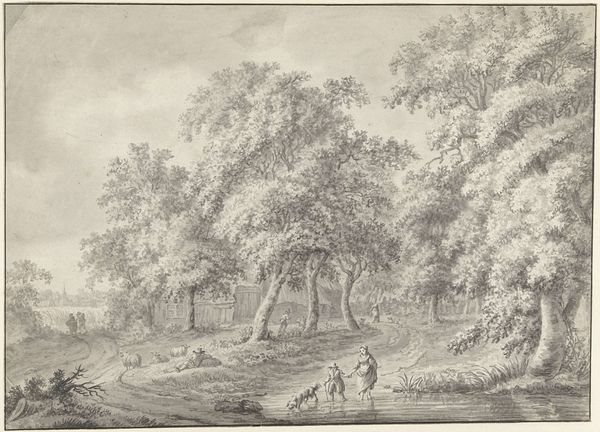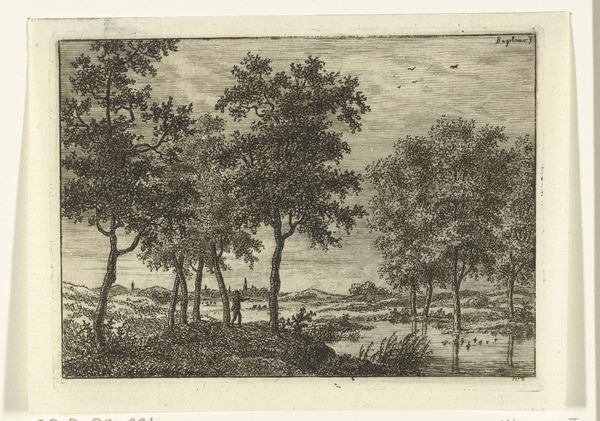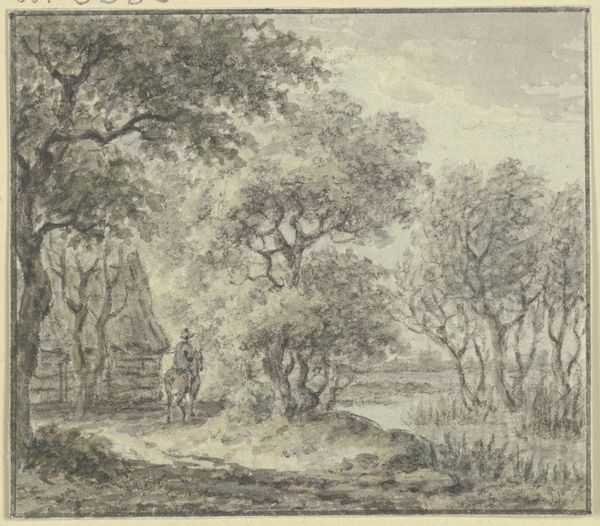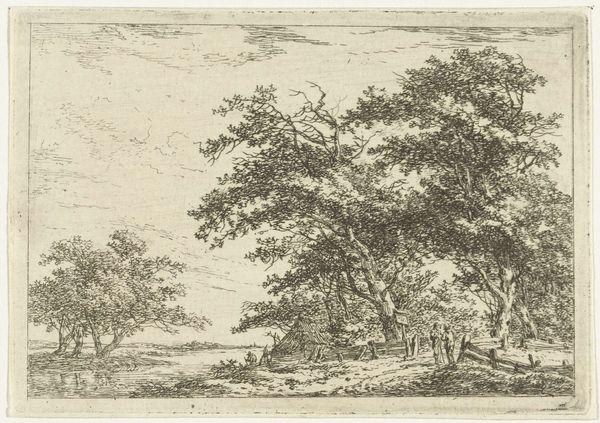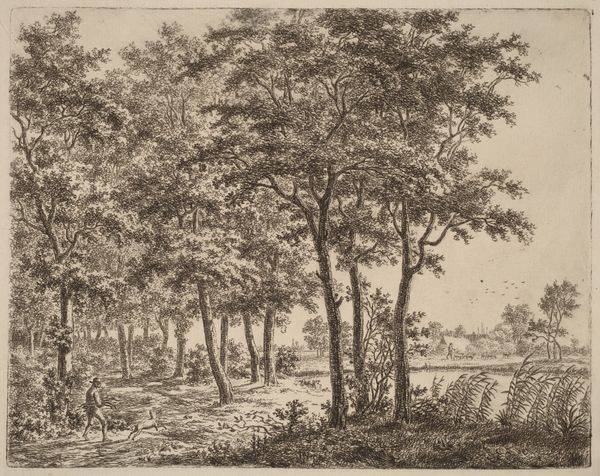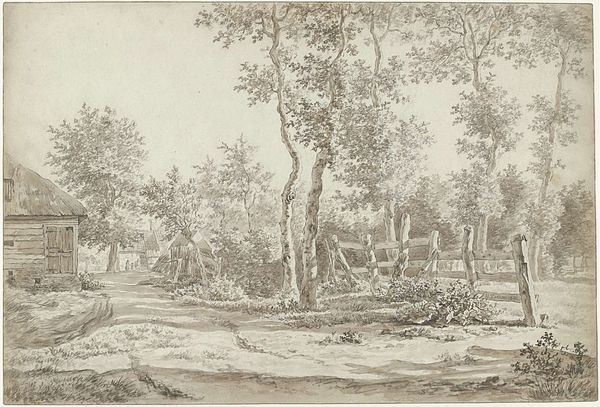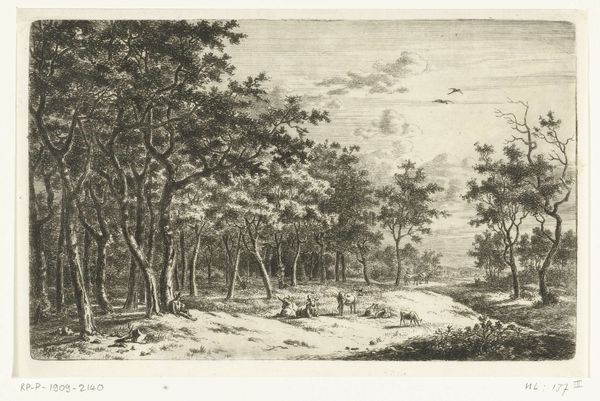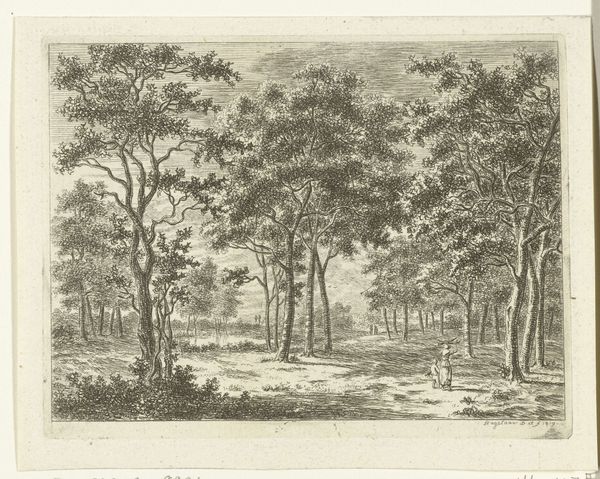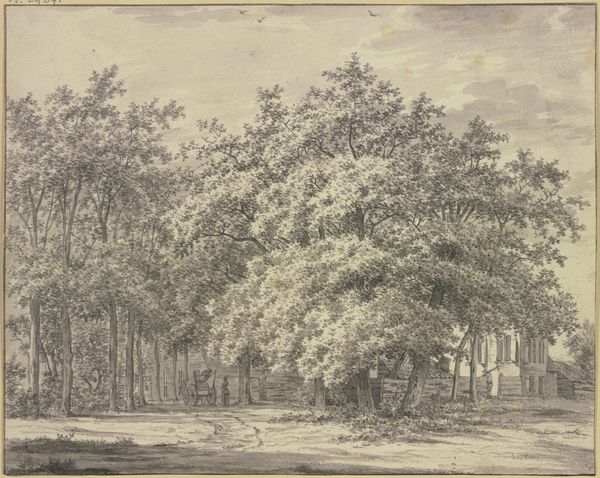
drawing, ink, pencil
#
drawing
#
landscape
#
etching
#
ink
#
romanticism
#
pencil
#
watercolor
Dimensions: height 145 mm, width 203 mm
Copyright: Rijks Museum: Open Domain
Curator: What strikes me first is how muted the tones are, almost monochromatic. It feels quiet, still. Editor: Well, let's add some context. We're looking at a drawing entitled "Bosweg met twee huizen" which roughly translates to "Forest Road with Two Houses." It's attributed to Pieter Ernst Hendrik Praetorius, made sometime between 1801 and 1876. It seems to employ ink, pencil, and watercolor on paper. Notice the etching technique; one can assume, given the historical context of that moment, that making many drawings like this, would potentially yield many etchings. Curator: Yes, focusing on the materials—the combination of ink, pencil, and watercolor creates a unique texture, doesn't it? The artist's hand is quite present; this process wasn't mediated by advanced technology, and I am so fascinated by how the materials work together to create depth and light within the scene, wouldn’t you agree? Editor: I would also consider the era. Romanticism embraced idealized landscapes, but there’s a stark reality here too. Look closely at the figure on the path—alone, walking away, seemingly a man but difficult to fully gender—and it is not clear whether he’s part of nature or somehow detached from it. I question the function of this image and others like it and what they have meant across time and continue to mean in the face of capitalist and other forces that extract value from people and the natural world. Curator: Indeed! This landscape reflects that societal preoccupation with finding peace. Do you also observe an echo of working-class values reflected in its lack of grandeur? The artwork lacks a focus on portraying material wealth! Editor: Perhaps, but consider the lack of detail regarding the worker: is there an obfuscation occurring by aestheticizing a simple forest road, potentially blinding us to the socioeconomic factors that might determine who has access to leisure and who does not? Does the image offer an escape from these difficult realities? Curator: This is a welcome critique and one which asks key questions to consider beyond merely technique. I like your questioning, thank you for deepening our understanding! Editor: The pleasure's been all mine. We're only just scratching the surface, of course, but this approach allows us to grapple with the difficult conditions that might have birthed Praetorius’ work and continue to be relevant today.
Comments
No comments
Be the first to comment and join the conversation on the ultimate creative platform.
